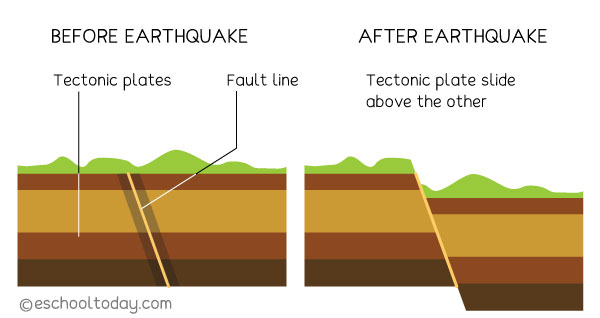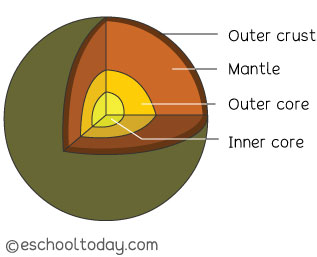- Earthquakes
Introduction to Earthquakes & Tsunamis
Turn on the TV or read the newspapers, and almost always, there is something devastating happening somewhere as a result of nature’s power. Examples of such natural occurrences are hurricanes, tornados, wildfires, volcanic eruptions, flooding, earthquakes, and tsunamis. These are usually not caused directly by humans, but their effects live with us for a long time. In this lesson, we shall look at one of such natural occurrences… earthquakes!
What is an Earthquake?
In simple terms, earthquakes are the rumblings, shaking, or rolling of the earth’s surface. It is what happens when two blocks of the earth suddenly slip past one another or break apart from each other as a result of tension caused by prolonged energy build up.

Earthquakes come in many forms. It may be a shock under your feet, or it may be powerful and destructive enough to flatten an entire city. They can happen anywhere, land or sea.
Foreshocks, mainshocks, and aftershocks
Sometimes, there are smaller shocks that occur before (foreshock) and after (aftershock) the main earthquake (mainshock). Sometimes foreshocks are so big, and scientists are unsure if it is the mainshock. Foreshocks and aftershocks can occur for days, weeks, and months of the main earthquake.
Earthquakes are also called temblors.

It is important to understand the earth’s makeup to help understand earthquakes better.
In this diagram, you will notice that the inner and outer core of the earth (middle part) is liquid, containing iron and nickel of extreme temperatures (5,500°C).
The Mantle is semi-molten rock, also called magma. The outer is the crust, which is the hard part of the earth that forms the surface. This outer crust includes the land on which we live, the oceans and ocean deeps, and anything within 40km (approx) down the earth’s surface.
Earthquakes are developed in the outer crust of the earth.
